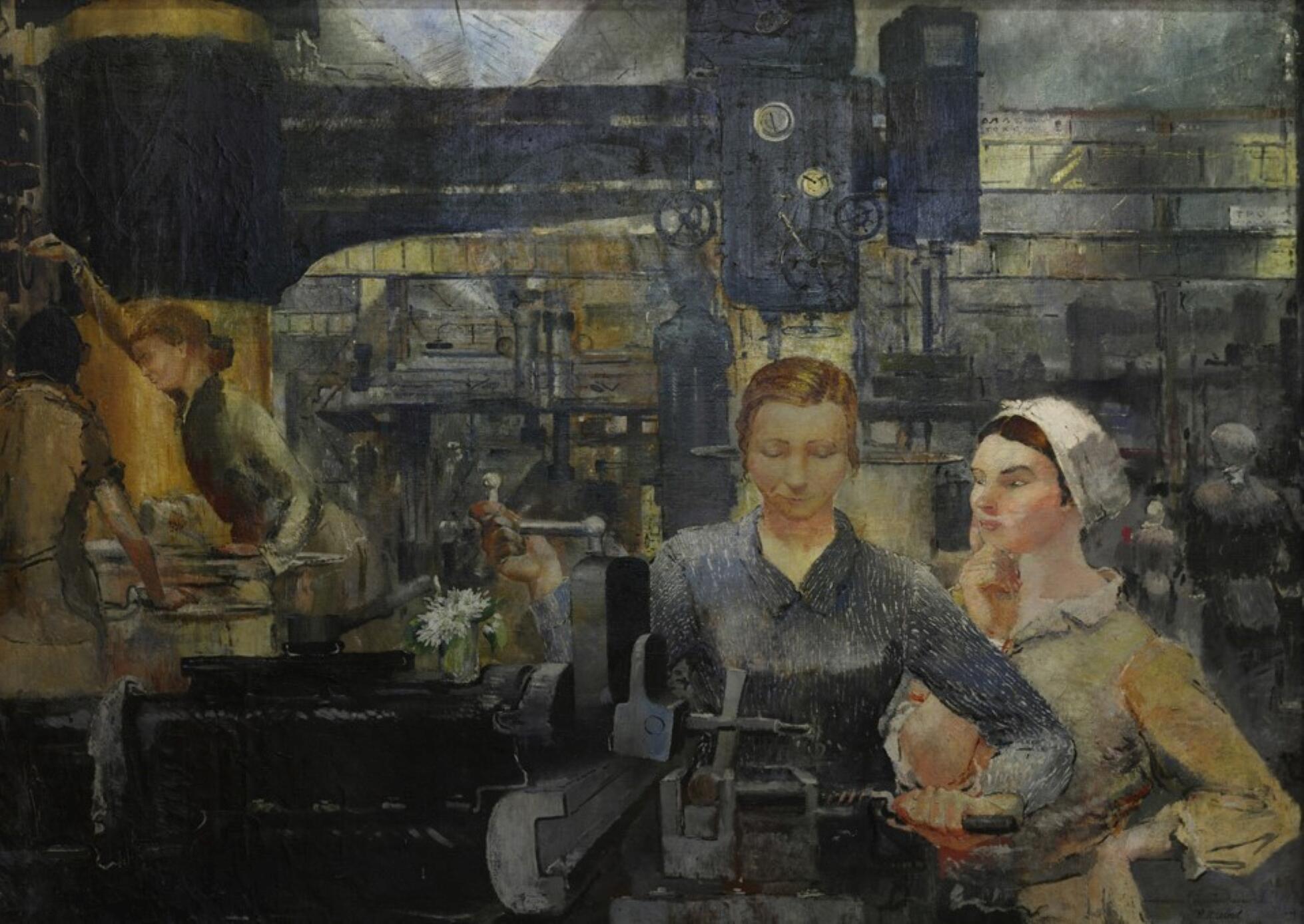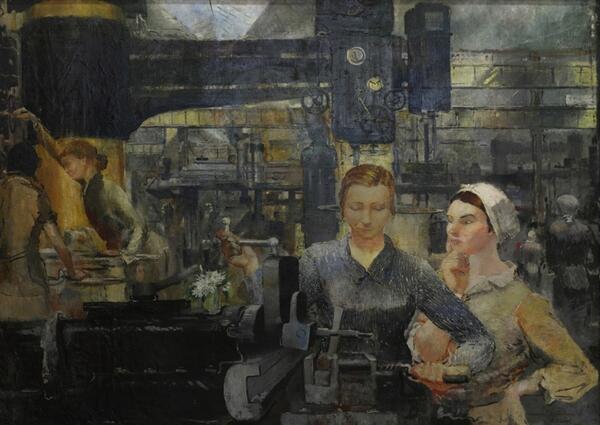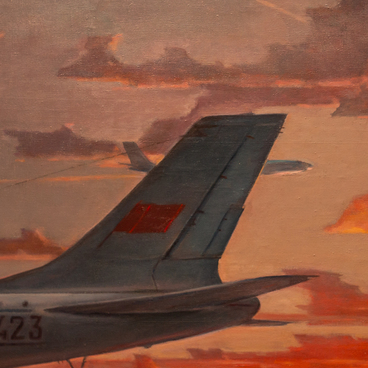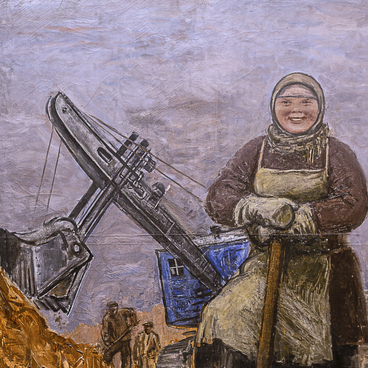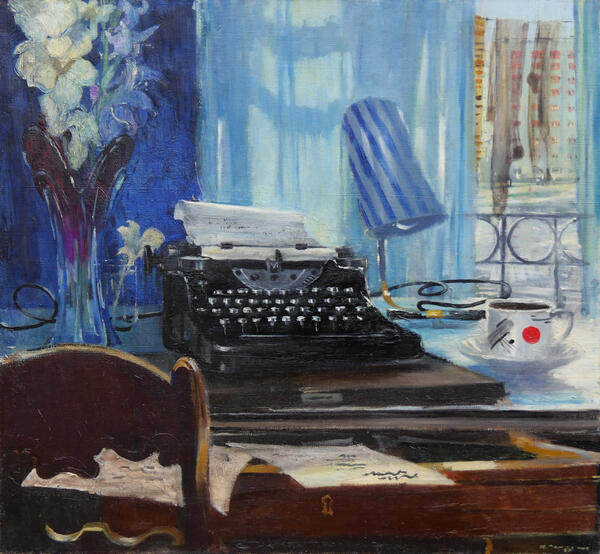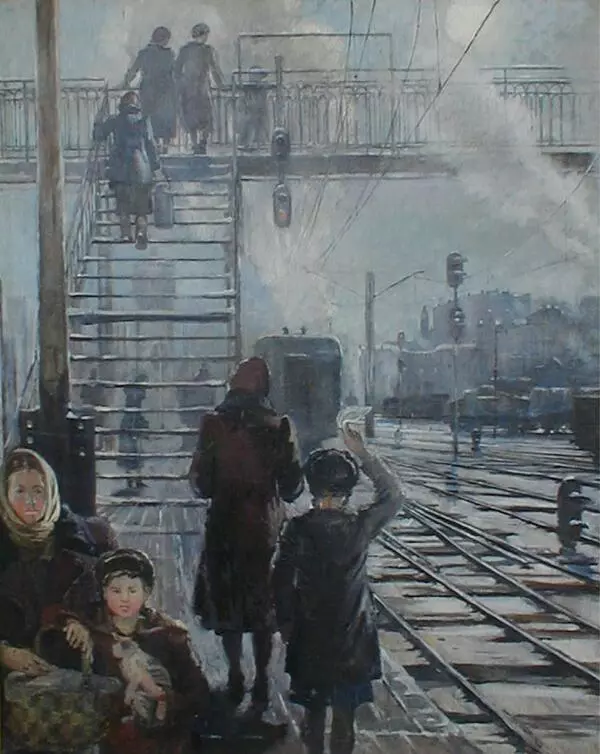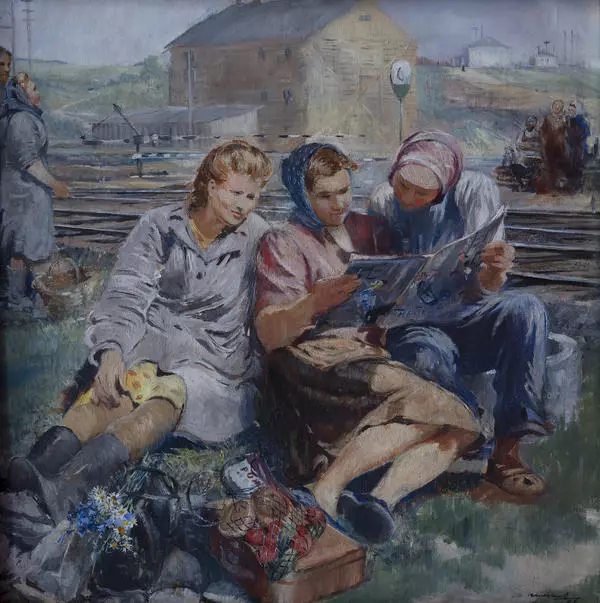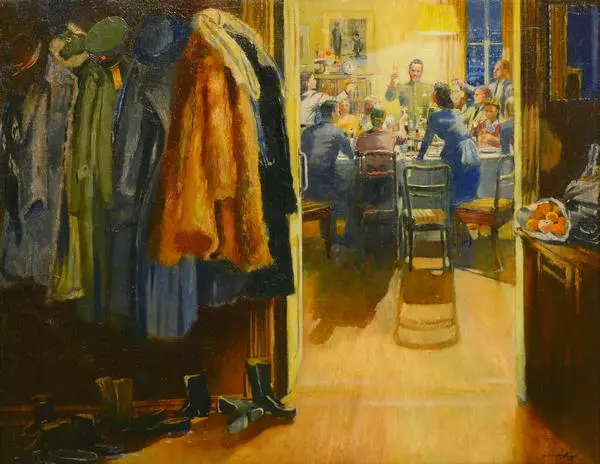The Yekaterinburg Museum houses the ‘Workers of the Uralmash’ triptych by Yuri Pimenov. A triptych is an artwork made up of three pieces sharing the same subject matter. This painting is its central piece.
The right and left pieces also depict the life of the workers. One of them shows the women in a homely environment, drinking tea together and talking, while the other switches to a theater box where they watch a play. They look elegant wherever they go, even on the busy floor of the machine plant.
The triptych series gives the viewers the feeling of a story being told as if they look not at paintings but rather at lively and spontaneous photographs. At the same time, Pimenov adds a poetic touch to the scene, focusing the viewers’ attention on the graceful gestures and thoughtful gazes of the women, as well as the small flower bouquet standing on the lathe machine.
Yuri Pimenov visited Uralmash on his creative trip. The Soviet authorities often sent artists on such trips to industrial sites and collective farms during the first five-year plans. Upon returning, painters would reflect the achievements of the Soviet economy and the enthusiasm of shock workers in their works. Usually, exhibitions were organized to demonstrate these paintings. Pimenov’s triptych was part of the ‘The Ural and Kuzbass Regions in Paintings’ traveling display and was shown in Sverdlovsk in 1935.
Yuri Pimenov is one of the most recognizable painters of the first half of the 20th century. His artwork evolved from minimalistic compositions, that were especially valued in the mid-1920s, to lyrical romanticism that appeared after the Great Patriotic War. In the 1920s, as a member of the ‘Society of Easel Painters’, Pimenov created art and graphics in the manner that was characteristic of that movement. The paintings of easel painters were distinguished by straight lines, a poster-like appearance, dynamic perspectives, and realistic images because the artists chose technical innovations and sports as their subject matter. After the war, Pimenov turned to lyricism.
Even though he was part of the official Soviet art system, the painter still managed to develop his own unique manner of painting. Starting from the 1930s, Pimenov began to use translucent paints of a light and demure color scheme against a slightly blurry background. He referred to himself as a realistic impressionist.
The right and left pieces also depict the life of the workers. One of them shows the women in a homely environment, drinking tea together and talking, while the other switches to a theater box where they watch a play. They look elegant wherever they go, even on the busy floor of the machine plant.
The triptych series gives the viewers the feeling of a story being told as if they look not at paintings but rather at lively and spontaneous photographs. At the same time, Pimenov adds a poetic touch to the scene, focusing the viewers’ attention on the graceful gestures and thoughtful gazes of the women, as well as the small flower bouquet standing on the lathe machine.
Yuri Pimenov visited Uralmash on his creative trip. The Soviet authorities often sent artists on such trips to industrial sites and collective farms during the first five-year plans. Upon returning, painters would reflect the achievements of the Soviet economy and the enthusiasm of shock workers in their works. Usually, exhibitions were organized to demonstrate these paintings. Pimenov’s triptych was part of the ‘The Ural and Kuzbass Regions in Paintings’ traveling display and was shown in Sverdlovsk in 1935.
Yuri Pimenov is one of the most recognizable painters of the first half of the 20th century. His artwork evolved from minimalistic compositions, that were especially valued in the mid-1920s, to lyrical romanticism that appeared after the Great Patriotic War. In the 1920s, as a member of the ‘Society of Easel Painters’, Pimenov created art and graphics in the manner that was characteristic of that movement. The paintings of easel painters were distinguished by straight lines, a poster-like appearance, dynamic perspectives, and realistic images because the artists chose technical innovations and sports as their subject matter. After the war, Pimenov turned to lyricism.
Even though he was part of the official Soviet art system, the painter still managed to develop his own unique manner of painting. Starting from the 1930s, Pimenov began to use translucent paints of a light and demure color scheme against a slightly blurry background. He referred to himself as a realistic impressionist.
